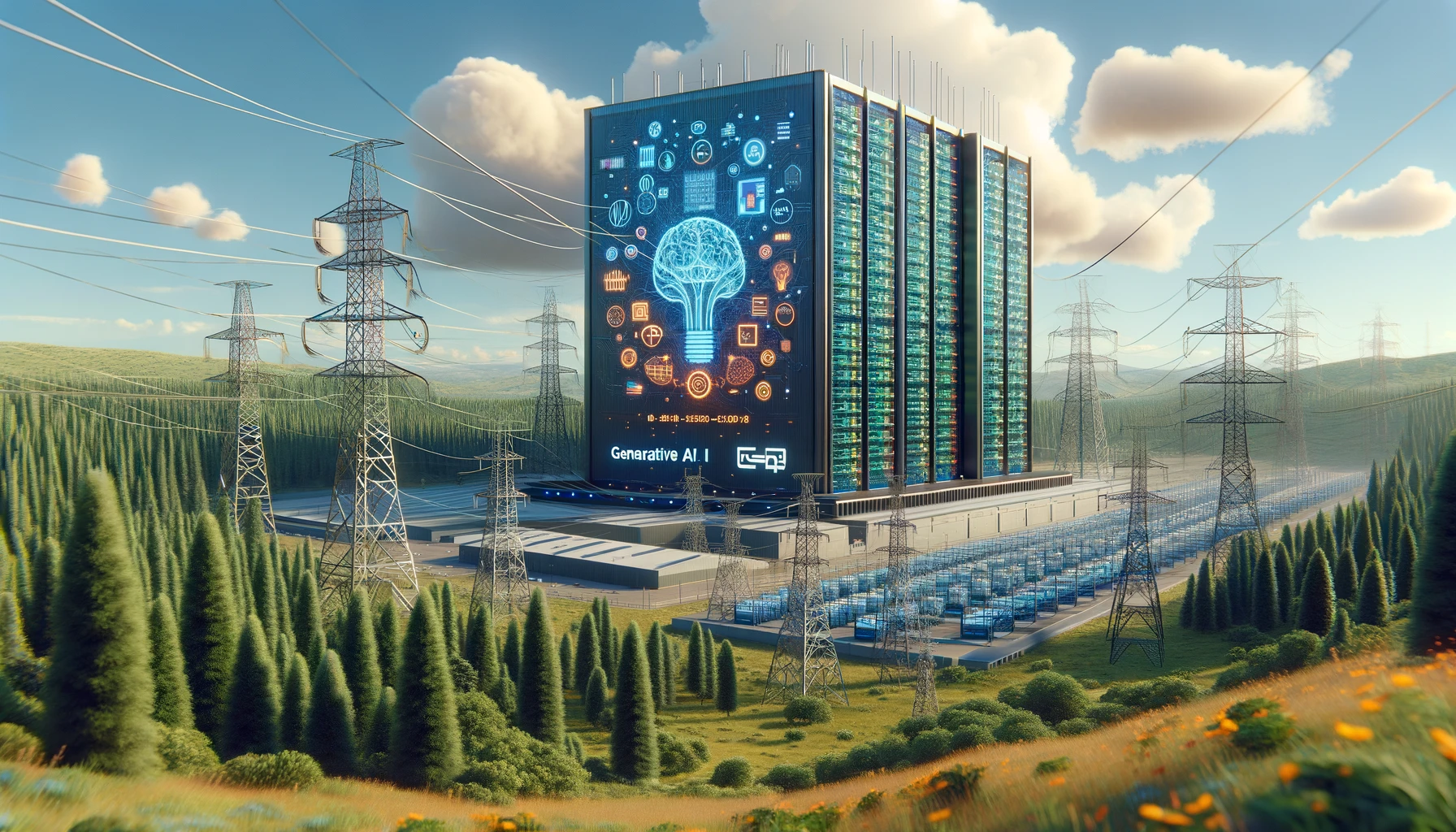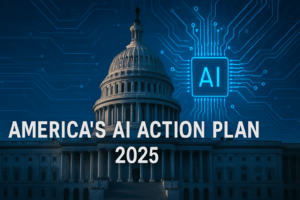Generative artificial intelligence (AI) has emerged as a transformative force, revolutionizing how data is created, processed, and utilized across diverse sectors. This surge in generative AI applications spans from creating realistic digital artworks to generating complex engineering simulations and automating content production in media. As AI technologies like natural language models, image generators, and advanced neural networks evolve, they necessitate substantial computational power and data volumes, primarily sustained by high-performance GPUs (Graphics Processing Units).
However, the rapid ascension and widespread deployment of these technologies are not without significant consequences. The intensive computational demands of training and operating generative AI models have led to an exponential increase in energy consumption. This surge is placing unprecedented pressure on the global energy infrastructure, highlighting a critical bottleneck that could impede sustainable development: the substantial energy requirements of AI systems.
As these technologies continue to advance, the infrastructure supporting them, particularly data centers, has become major electricity consumers, significantly impacting the environment due to reliance on nonrenewable energy sources and contributing to increased carbon emissions. This scenario presents a dual challenge of managing escalating energy demands while mitigating environmental impacts, posing a complex problem for technology developers, policymakers, and environmental strategists alike.
Thus, the crux of this discussion revolves around a pressing question: How can the tech industry reconcile the rapid growth of generative AI with the urgent need for sustainable energy solutions? The answer lies in a multifaceted approach that includes enhancing energy efficiency, increasing reliance on renewable energy sources, and innovating in technology and policy frameworks to ensure that the digital advancements powered by AI do not come at the expense of the planet’s health.
Exponential Energy Demands of Generative AI
The development and operation of generative AI models require immense computational resources, predominantly facilitated by Graphics Processing Units (GPUs). These GPUs are essential due to their ability to perform complex mathematical computations rapidly, a necessity for processing the vast datasets AI systems learn from. Training these sophisticated models is not only a computationally intensive process but also a prolonged one, often extending for weeks or months, thus consuming significant electrical power.
This necessity has spurred a relentless pursuit of more potent and complex AI models, each aiming to surpass its predecessors in accuracy and capabilities. As a consequence, the energy consumption of data centers, where these AI models are often developed and housed, escalates continually. The environmental impact of this burgeoning demand is considerable, with many data centers reliant on nonrenewable energy sources that emit large quantities of carbon dioxide, contributing to global warming and climate change.
The strain on energy resources and the environmental toll are compounded by the ongoing drive to achieve more advanced AI functionalities, which in turn demands ever more powerful computational infrastructures. This cycle of demand for more significant computational power and the subsequent energy consumption it necessitates poses a substantial sustainability challenge that the tech industry must address.
Grid Strain Caused by Data Centers
Data centers, pivotal in the ecosystem of generative AI, are among the most significant electricity consumers globally. Their operations, which require continuous power to maintain vast arrays of servers and cooling systems, exert considerable strain on power grids. This demand is particularly high in regions known for their technological infrastructure, where multiple data centers often operate simultaneously.
The potential consequences of this immense power consumption are severe. Increased demand can lead to brownouts and blackouts—temporary reductions in power availability or complete power failures, respectively. These incidents disrupt not only the digital services reliant on these data centers but also the broader community’s daily activities. Moreover, the intense competition for power can slow the transition to clean energy sources. As grids are forced to prioritize immediate energy demands, plans to integrate renewable energy solutions, such as solar or wind power, may be deferred, undermining efforts to reduce carbon emissions.
The geographical concentration of data centers, often clustered in tech-centric regions like Northern Virginia and Silicon Valley, exacerbates local energy demands. This localization stresses the regional power infrastructure, which may not have been designed to support such concentrated high-energy operations. The resultant high demand can impede local grid operators’ ability to maintain stable and efficient energy distribution, further complicating the energy landscape.
Energy Efficiency
The quest for energy efficiency in AI-driven data centers is pushing forward innovations in both hardware and software domains. Specialized chips designed specifically for AI computation, such as Google’s Tensor Processing Units (TPUs), offer significant energy savings compared to traditional processing units. TPUs are tailored to handle the complex matrix calculations that are typical in machine learning, doing so more efficiently than general-purpose GPUs. This specialization not only speeds up processing times but also cuts down on the energy required for AI tasks.
Software optimizations also play a crucial role in enhancing energy efficiency. By streamlining algorithms, developers can reduce the computational load required, thereby lowering the power needs of data centers. Techniques such as pruning and quantization of neural networks help in minimizing the computational expense without compromising the performance of AI models. These advancements are crucial as they directly address the energy consumption challenge, making AI applications more sustainable and less taxing on the environment.
Renewable Energy Sources
As the energy demands of data centers skyrocket, there is an increasing shift towards using renewable energy sources like solar, wind, and hydropower. This transition is essential not only for reducing carbon emissions but also for ensuring the long-term sustainability of AI technologies. Major tech companies are setting ambitious targets to power their operations with renewable energy, signaling a significant shift in how data center operations are powered.
However, the intermittency of renewable sources presents challenges, as wind and solar energy availability can vary significantly throughout the day and year. To counter this, energy storage solutions such as batteries and thermal storage are being integrated into the grid to ensure a consistent energy supply. These solutions help stabilize the grid and allow data centers to operate reliably on renewable energy, even during periods of low natural energy generation. This shift not only helps mitigate the environmental impact of high-energy AI systems but also aligns with global efforts to combat climate change.
Innovative Cooling Technologies
Data centers consume a vast amount of energy, not just in computational processes but also in cooling the heat generated by these processes. Traditional air cooling systems are being supplemented and sometimes replaced by more advanced technologies like liquid cooling and immersion cooling. These innovative cooling methods are far more efficient, reducing the energy required for cooling by up to 90% compared to conventional methods.
The advantages of advanced cooling technologies extend beyond just energy savings. They also allow for the possibility of locating data centers in warmer climates without the penalty of increased cooling costs. This flexibility can lead to more strategic placement of data centers, potentially reducing data latency and increasing service speeds for users in those regions. Adopting such technologies is vital for reducing the overall energy footprint of data centers and can significantly contribute to making AI operations more sustainable.
Regulatory Frameworks
Governments play a pivotal role in shaping the sustainability trajectory of AI technologies through regulatory frameworks. By instituting policies that incentivize energy-efficient AI development, they can significantly impact how data centers and AI systems manage their energy consumption. For instance, setting stringent standards for energy use in data centers encourages organizations to invest in more efficient technologies and practices. These standards can also push for greater transparency in how energy is used, allowing stakeholders to make more informed decisions about energy consumption and efficiency.
Moreover, the transnational nature of data centers and their impact necessitates global cooperation. International agreements and guidelines can help harmonize efforts to reduce the carbon footprint of AI operations, ensuring that advancements in AI technologies are aligned with global sustainability goals. Such regulatory initiatives not only support environmental sustainability but also foster innovation in the field of energy-efficient technologies, creating a conducive environment for sustainable advancements in AI.
Dispersing Facilities
The concentration of data centers in specific areas, like Northern Virginia, often leads to significant local grid strain and energy demand spikes. To alleviate these issues, there is a growing movement towards dispersing data centers across broader geographic areas. This distribution strategy helps mitigate the impact on any single region’s power infrastructure, reducing the risk of overloading local grids and improving overall energy management.
Spreading out data center operations also brings broader economic benefits. It promotes job creation and technological investment in less developed areas, supporting regional economic growth and development. Furthermore, a more geographically diverse infrastructure enhances the resilience of the network against localized power outages or disruptions. This strategic dispersion of data centers not only helps balance the energy demands more evenly across different regions but also contributes to more equitable economic development.
Cold Climates
Utilizing cold climates for data center operations presents a unique opportunity to naturally reduce cooling requirements. In colder regions, the ambient temperature can effectively dissipate the heat generated by data centers, significantly lowering the energy consumed by cooling systems. This natural cooling method reduces both the operational costs and the carbon footprint of data centers.
Locating data centers in such climates also aligns with strategies to minimize environmental impact. By reducing reliance on artificial cooling solutions, which often involve significant energy consumption, data centers can operate more sustainably. Additionally, these regions can offer other benefits such as lower land costs and reduced risk of natural disasters, which can be appealing for data center development. Adopting this approach not only leverages natural resources for economic gain but also contributes to a more sustainable and environmentally friendly technology infrastructure.
The Path Forward: Addressing the Energy Challenge in AI
The rapid evolution of AI technologies necessitates immediate and concerted actions to ensure their sustainability. Significant investment in research is crucial to achieve breakthroughs in energy efficiency and the integration of renewable energy sources with AI systems. This includes developing technologies that can harness solar, wind, and other sustainable energy forms more effectively within data center operations.
Industry collaboration is equally important. By sharing best practices, developing common standards, and cooperating on sustainability initiatives, companies can amplify their impact. Such collaborations can lead to innovations that reduce the energy footprint of AI technologies while enhancing their capabilities.
Policymakers must also play an active role by setting clear guidelines and creating incentives for the development of energy-conscious AI. This can encourage organizations to prioritize sustainability in their AI strategies and operations.
A long-term perspective is essential to balance the immediate needs of innovation with the broader goals of responsible energy use and climate change mitigation. This approach will ensure that technological advancements contribute positively to societal goals and environmental sustainability.
Generative AI holds immense potential to revolutionize industries, enhance efficiency, and open new frontiers of knowledge and capability. However, the responsibility to develop these technologies sustainably cannot be overstated. It is imperative for the tech sector, government, and society to collaboratively ensure that the growth of AI does not come at an unsustainable cost to our planet.
This collective effort will not only address the immediate challenges posed by the energy demands of AI but also ensure the long-term viability and ethical development of these transformative technologies. The call to action for all stakeholders is clear: work together to forge a path that respects both our technological ambitions and our environmental responsibilities.






